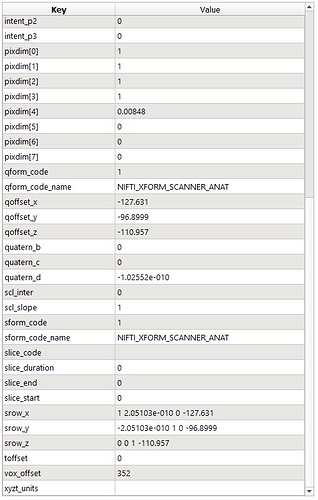Hi,
I am using the C# implementation for SimpleITK to display MRI data in the Unity game engine and I am running into issues with orientations and IJK to world transform matrices.
My data is a nifti file in RAS coordinates with 1mm isotropic voxels and :
origin = (-127, -96, -110)
direction = identity matrix
dimensions = (256, 256, 208)
From my understanding, when loading an image file in SimpleITK, it converts it to LPS format, meaning that subsequent calls to the GetOrigin and GetDirection functions should be returning these values:
origin = (127, 158, -110)
direction = (-1, 0, 0; 0, -1, 0; 0, 0, 1)
However I am getting a different origin value of (127, 96, 110).
I confirmed the LPS orientation values by converting the original RAS scan into LPS and I am getting the proper numbers in 3DSlicer. But when I load the corrected LPS scan into SimpleITK I get yet again different values :
origin = (-127, -158, -110)
direction = (1, 0, 0; 0, 1, 0; 0, 0, 1)
I get the feeling that SimpleITK is just inverting the x and y origin/direction values regardless of the initial orientation. Am I missing something? I don’t know if this is expected behavior and how I should correct for it.
Thank you for your help!
Guillaume D.



